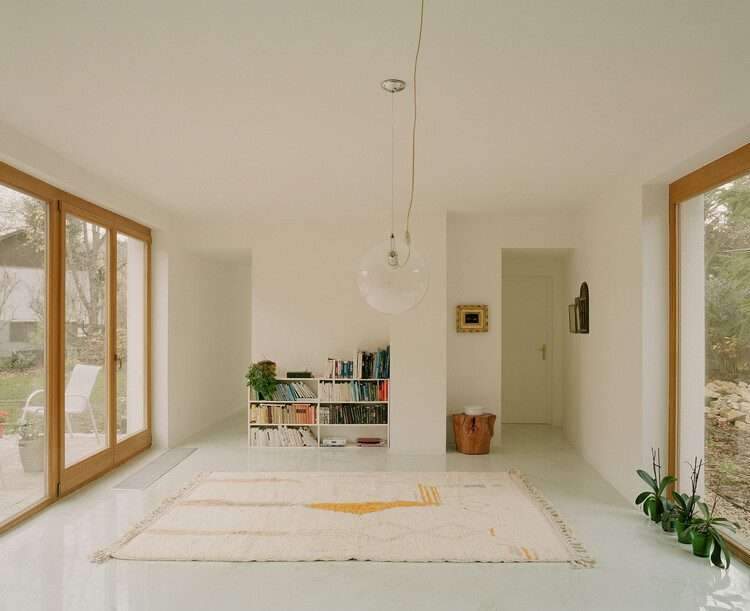Star of the North: Uncovering a New Architecture in Minnesota

Architecture draws together influences in art, culture and daily life. When designing for local communities and sourcing regional materials, architects often take inspiration from vernacular traditions. Utilizing traditional materials and resources from the area where a building is located, they draw from local climates and a history of building and ideas. Building sites around the world are diverse locations shaped by new construction technologies, past techniques, and changing conditions of cultural life.


In the United States, Minnesota is known as the Land of 10,000 Lakes for its incredible landscapes. From western prairies and deciduous forests to bodies of fresh water, part of the state’s vernacular traditions are directly tied to local materials and climate. In turn, new architecture in the state draws inspiration from these natural conditions and new ways of living and working. The following projects showcase contemporary design from the last decade across a range of programs and scales, and together, give a glimpse into what it means to build there today.

Located between the agricultural fields of southern Minnesota and the Straight River Valley along the I-35 corridor, the design team for this safety rest area was initially struck by the transformative quality of the site. The site allows weary travelers the ability to stretch their legs and submerse themselves in a serene wooded river setting. The building, pavilions and site are structured to enhance one’s experience of this place.

Responding to the community’s desire for a gathering space, and seizing the potential of the site, the new Maple Grove Library is designed as a pavilion in a park, connecting residents to information, the outdoors, and the larger community. A seamless building and landscape design fully integrates the library and park, while a lake provides renewable, hydrothermal energy for the building.

Since its founding in 1871, Lakewood Cemetery in Minneapolis has served as the foremost resting place for Minnesota’s distinguished citizens. The private, non- sectarian cemetery is laid over 250 acres of rolling landscape adjoining the city’s historic Grand Round’s parkway system. Challenged with the task of adding a large structure – 24,500 square feet – to a much beloved place, the design team committed themselves to a strategy that protected and enhanced the cemetery’s historic landscape.

Since its opening in 1974, Orchestra Hall has played a vibrant role in the cultural and civic life of Minneapolis. A top priority of the project was to preserve the concert auditorium as the iconic element of the original 1974 design while re-envisioning lobby and amenity areas. The architecture of the additions, constructed of stone and glass, reasserts the presence of Orchestra Hall as the southern anchor of Nicollet Mall. It is designed to give new emphasis to the Hall within Peavey Plaza and to re-engage the Hall with its urban context.

Designed with Minneapolis-based MSR Design and in close partnership with the City of Minneapolis and public advocates, the building is the latest in a new coalition of civic architecture across the United States conceived around the question: “How can our public spaces better reflect the communities they serve?” The soaring glass and aluminum facades that wrap around the Public Service Building are welcoming, bright faces in the quad. Double height pockets are carved from the building, breaking up its massing and giving each of its frontages a distinctive presence.

A new memorial designed pro bono by international architecture/engineering firm LEO A DALY honors the sacrifice of firefighters killed in the line of duty while serving Minnesota communities. Completed in September 2012, the memorial is located on the State Capitol grounds in Saint Paul. The vision for the memorial is to provide a meaningful experience for Capitol visitors—those with direct connections to the fire service and those who appreciate their efforts.

This zinc clad house trimmed in black richlite is built on an existing foundation in a tall pine forested site high above the St. Criox River in Minnesota. The existing home was beset with serious moisture infiltration problems which in turn gave rise to a host of environmental efficiency and air quality issues. The design team saved all the foundation and masonry components that were salvageable.

The University of Minnesota Duluth has instituted a new Bachelor of Science degree in Civil Engineering (BSCE). The new building, completed in 2010, provides approximately 35,300 gross square feet to house classrooms, instructional and research laboratories, and office space for the Civil Engineering Department. The new building builds on and reinforces the existing circulation patterns that are part of the UMD campus.






